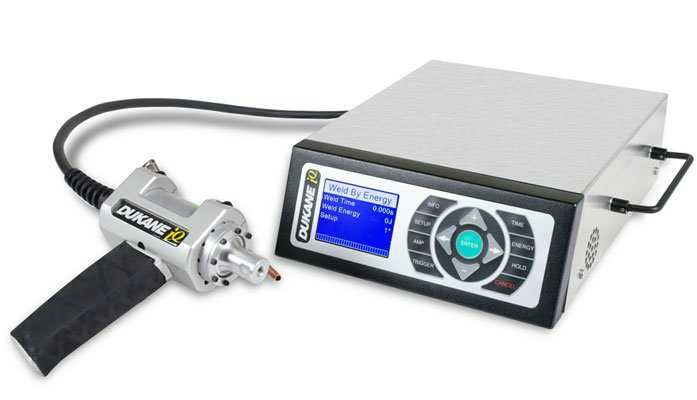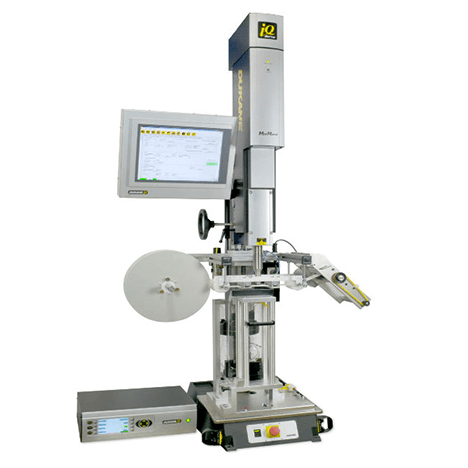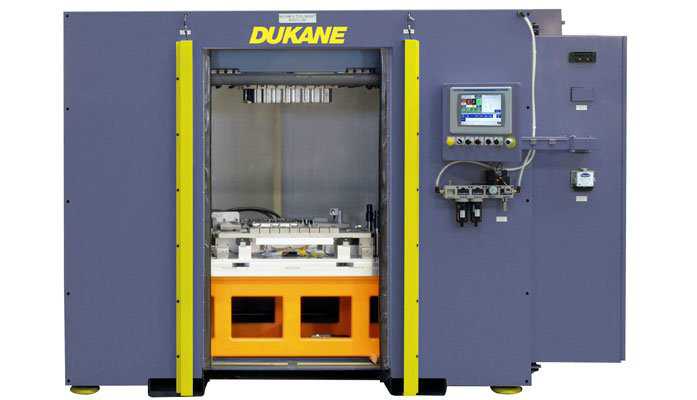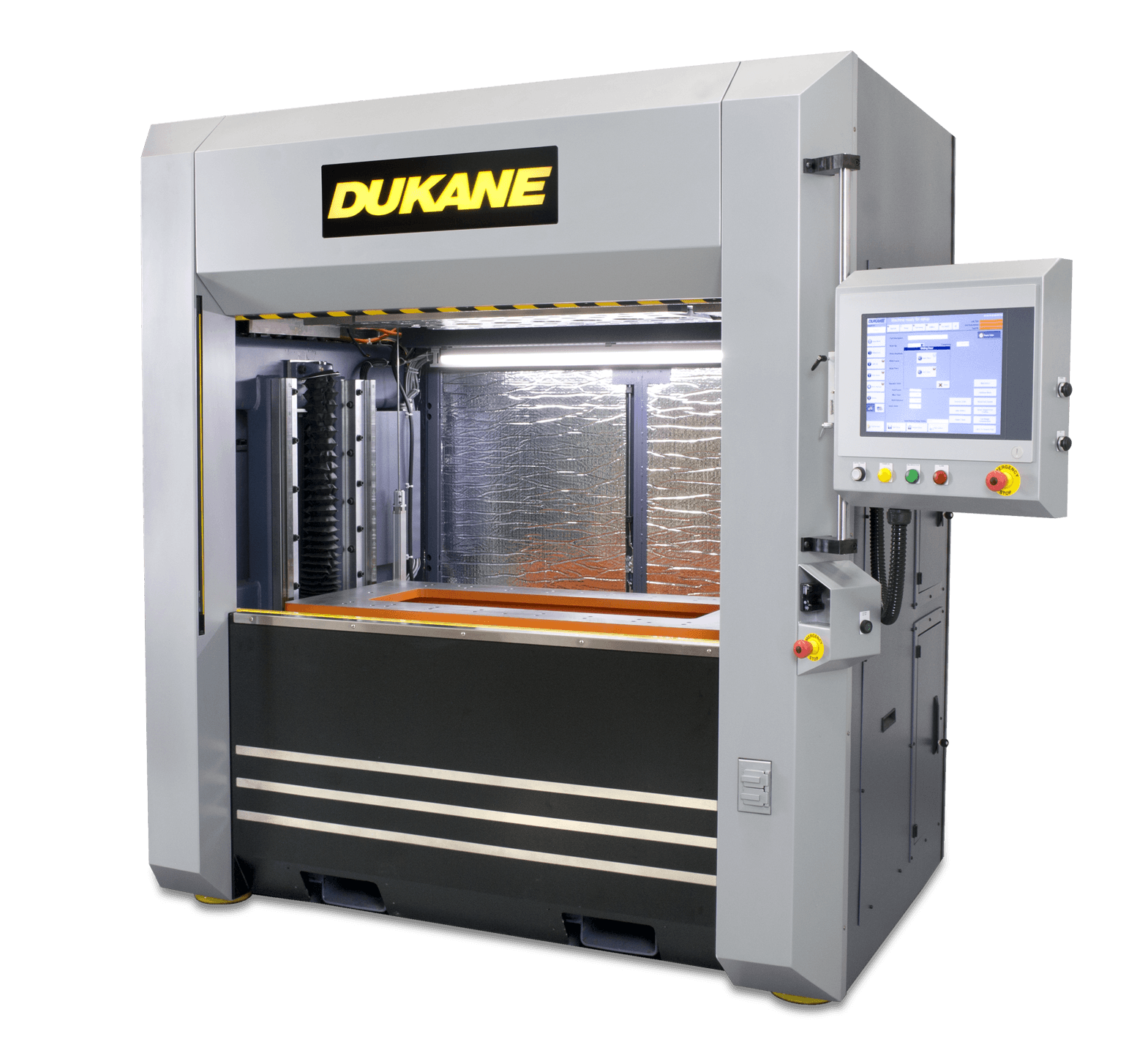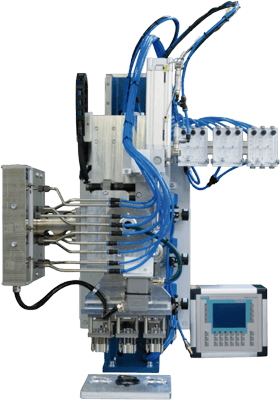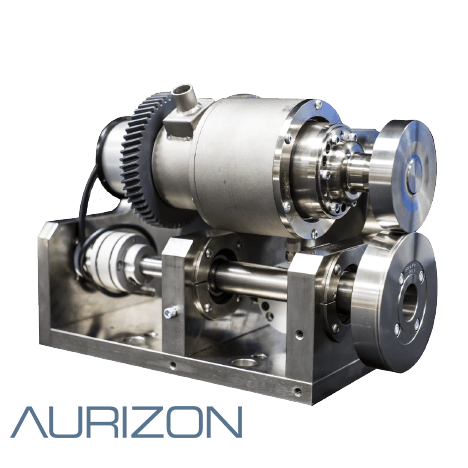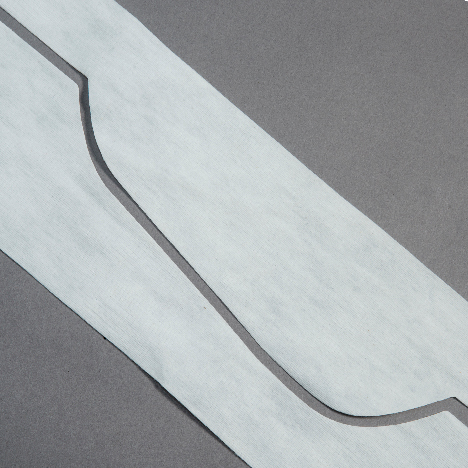The boosters serve two purposes; second mounting point for the stack assembly and either amplifying or reducing the amplitude. Like the transducer, the boosters have a nodal point. At the nodal point there is a mounting ring designed to fit into the press system or machine mount applications. There are two types of mounting ring configurations. Standard boosters have a split mounting ring that houses two “O” rings in a similar configuration as the transducer. Resonant style boosters have no “O” rings. These are designed for applications where solid fixed mounting of the stack assembly is critical for the application. An example would be an application requiring two stack assemblies to weld a single part, because near horn proximity, motion in the stack may allow them to touch. Resonant boosters eliminate this problem.
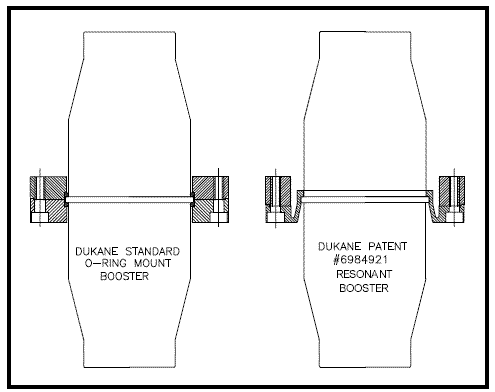 Standard and Resonant Boosters
Standard and Resonant Boosters
Boosters come in different “Gain” ratios. The mass of the booster below and above the nodal point determine the amount of gain to the amplitude from the transducer. This is the mechanical means for adjusting the stack amplitude to match the requirement to melt the particular plastic in each application. It is best to use the optimum booster size for the application. Leave the generator amplitude setting close to 100% and only make small generator amplitude adjustments when required. On most horns, the recommended max gain booster size will be stamped on the horn.The boosters are either titanium or aluminum. Titanium boosters, while costly, are more robust and stud thread holes hold up to many assembly and disassembly cycles. In continuous applications where heat dissipation is a benefit, aluminum boosters are recommended.




